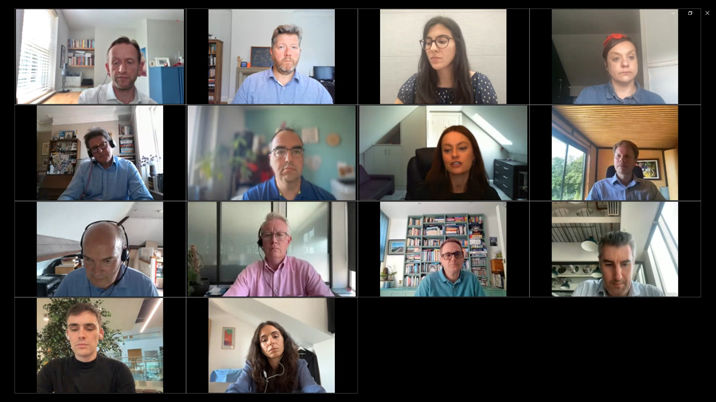
On 26th June, we held a Q&A webinar as part of the AI Special we ran in the May / June issue of InPublishing magazine. If you missed it, you can catch the recording by registering here.
Here are a few of the many highlights:
- Jennifer Schivas, CEO of 67 Bricks said: “It's important to underline that generative AI is bringing about a paradigm shift in the way that we expect to interact with content. Simply using AI to iterate on the way that we've always done things is not going to be enough. The question's more existential than should we start by using ChatGPT to help us write content or should we stick a chat bot on our website.”
- On the subject of training Newsquest journalists on how to use their ‘News Creator’ tool, Jody Doherty-Cove, head of editorial AI, advised them: “You're not going to be generating information; essentially, you're just using it as a copywriter. So, a good example of this would be that if you put in 100 words of notes, and you ask it for a 300 word story, it's going to start generating content rather than transforming the content that you've already got. That’s a very strong ‘don’t’.”
- When exploring the opportunity to create new content propositions using archived content, Markus Karlsson, CEO of Affino, cautioned publishers to be aware that “a lot of content archives are full of promotional content and full of content that's out of date…”. That said, the “reality is, there's a huge amount of value in archive content.”
- Sara Forni, AI product manager at Atex, thinks that “over the next twelve months, we will hear much about generative AI as a tool for personalising content based on user interest. Not only in an algorithmic approach but also the concept of modular journalism, which means, for example, formulating articles according to reader preferences or the reference formats such as social media, newsletter, website, magazine, for example.”
- On using AI to boost SEO, Brian Alford, founder and CEO of Bright Sites: “this is about following best practice, the E.A.T. (expertise, authoritativeness and trustworthiness) stuff, the topical authority that you currently have. Don't do things that you wouldn't normally do with the publication. AI for categorisation shouldn't replace humans completely, it's more about supporting and recommending.”
- On the subject of copyright protection, Daniel Lord, founder and CEO of Content Catalyst, said that publishers should try to anticipate what a successful business model will look like for them in five years' time: “I would suggest that the default position is to ensure your content is not used to train AI models, nor licensed in perpetuity for applications that could compete with your current and future products.”
- Hannah Williams, MD, digital content at Immediate Media spoke of the importance of having guardrails: “You want to make sure that experimentation and learning doesn't happen at the expense of quality content and audience trust, but what we found is that you actually need the guardrails to empower the experimentation in the first place. Without some sort of tram lines or parameters in which to operate, we found that the willingness to test and learn was much lower.”
- Aliya Itzkowitz, manager at FT Strategies, spoke about the personalisation potential of AI: “We've seen a lot of what I'd call repackaging of content, summarisation, bullet point formats becoming very popular. And, also, what generative AI tools are now allowing us to do is to shape shift seamlessly from speech to text, text to image, etc, which allows for a lot more flexibility. Voice generated summaries of our content could be a possibility.”
- Stewart Robinson, managing director of Full Fat Things on the potential for increased workflow efficiency: “The biggest differences are around speeding up processes and therefore increasing the quality for readers. Where humans have to pass work between each other, there's an opportunity for AI to step in and suggest things. I say 'suggest' because I don't think you should allow the AI to just take over…”
- Robin Booth, managing director, at emap, on the roll out of their ‘Ask Nursing Times’ platform: “It requires enormous input. Pre-live, I suspect we probably did 500 test questions on every site and there's not many days that go by where I'm not in there doing other questions and checking what it's up to. It's very fluid, it's very dynamic and you do have to keep a careful eye on it. It's almost like it's a living beast that you're watching.”
- Derek Milne, commercial pixometrist at Pixometry, highlighted the benefits of increased automation for image editing, for instance in creating ‘image cutouts’: “What would typically take somebody maybe a minute, two minutes, ten minutes to do a very accurate cutout can be done in mere seconds.”
- For content optimisation, Tom Pijsel, VP product management at WoodWing, pointed out that you can use AI to optimise a story created for so that it can “be used in digital channels, by optimising SEO, adding additional headlines, adjusting paragraph lengths etc…” Additionally, AI can translate the story, adapt it for different titles, update its tone of voice. “Another interesting aspect is that these flows can also be applied to already created and archived content.”
- At William Reed, said John Barnes, chief digital officer, marketing teams are using an internal AI agent to assist in crafting emails for events with encouraging results: “We're seeing 40-50% of marketing’s time being saved in terms of copywriting effort.” And, with the AI agent suggesting different subject line phrasing, open rates have improved: “The differentiation in subject line fields has resulted in an open rate increase of nearly 7%.”
You can catch James Evelegh’s regular column in the InPubWeekly newsletter, which you can register to receive here.










